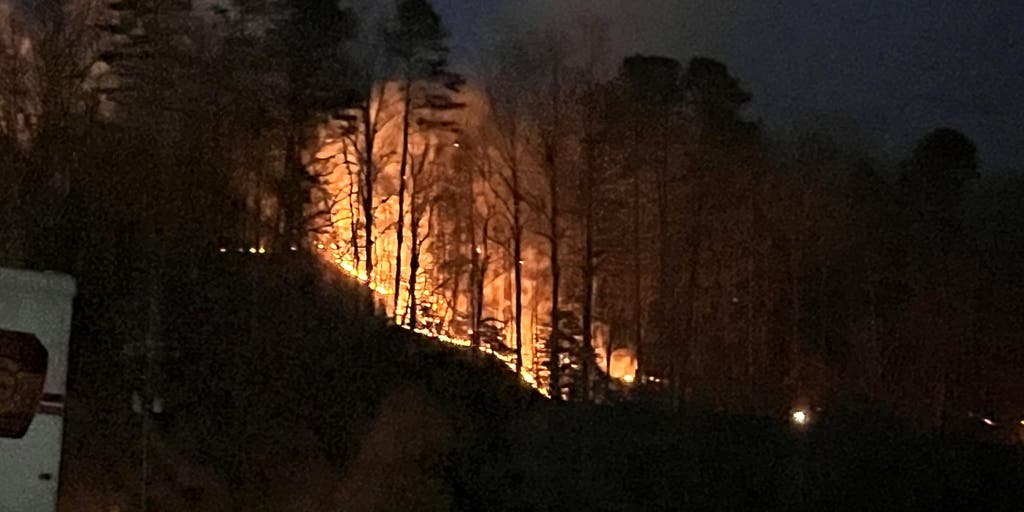LOS ANGELES – Southern California is expected to continue to face an increased risk of wildfires for a decent chunk of the year as an intensifying drought and episodes of Santa Ana winds combine to threaten more dangerous infernos.Outlooks released by the National Interagency Fire Center show increased fire activity across parts of the southern tier of the country, including the Desert Southwest, Florida and the Carolinas, through at least May.While fire activity has generally been minimal across the country during the first weeks of 2025, southern parts of the Golden State have been the epicenter of recent firestorms, including the destructive Palisades and Eaton Fires.The wildfires, which grew rapidly due to a combination of dry conditions, gusty winds and the lack of recent precipitation, destroyed more than 12,000 structures in Los Angeles County in mid-January.FIREFIGHTERS BATTLING DEADLY CALIFORNIA WILDFIRES REACH CRITICAL MILESTONE ON ROAD TO RECOVERYAccording to the NIFC, parts of the Golden State have received less than 25% of their typical rainfall, which has caused drought conditions to intensify to moderate to even extreme levels.”Drier than normal fuels are likely during this forecast period,” the agency stated. “One important thing to note is the fuel load is likely to be less during the late winter and early spring months since dry winters yield less of a grass crop. Therefore, above normal significant fire potential is likely for the South Coast PSA due to the drier than normal fuels forecast.”The peak of wildfire season in California typically occurs from August through October, but officials warn that the season is now a yearly event, with blazes possible at any time.The status of the El Niño Southern Oscillation, or what is commonly referred to as the ENSO, plays a significant role in precipitation across the southern tier of the country.During periods of La Niña, which is in control right now, rainfall across the region is typically hard to come by during the spring months as most of the storm activity is well to the north of areas such as Southern California, Florida and Georgia.Fortunately, forecasters believe the La Niña event will be weak, meaning that weather patterns may reverse to more than a La Nada or neutral status later in 2025, which could alleviate some drought concerns, especially for the Southeast U.S.DOWNED POWER LINE DURING GUSTY WINDS ERUPTS WILDFIRES IN HELENE-RAVAGED AREA OF NORTH CAROLINAA broad region of the Southeast from western North Carolina through Southern Florida is also at increased risk for wildfires.Some communities in this area face a deficit of 6-12 inches of precipitation, but the threat is compounded by dead trees and dry brush left over from hurricanes such as Helene and Milton.”The combination of drought-, beetle- and hurricane-impacted fuels will continue to be concerns from portions of the Lower Mississippi Valley through the Southeast,” specialists at the NIFC stated. “Earlier in January, parts of southeastern Georgia already reported increased wildfires associated with Helene’s impacts, and this will likely carry through the spring from the Florida Big Bend to the southern Appalachians.”North Carolina recently saw its fair share of fire activity, with several wildfires that broke out outside of Asheville.The blazes took firefighters several days to fully contain, which did cause temporary evacuations and destroyed several outbuildings.Firefighters attributed the start of some of the wildfires to utility lines, which ignited nearby dry brush.Persistent above-normal temperatures with below-average precipitation are expected to continue at least through May due to the overall La Niña pattern that is in control.Typically, the region’s fire season spans from late spring to early summer, but it can extend into the year due to significant events.







